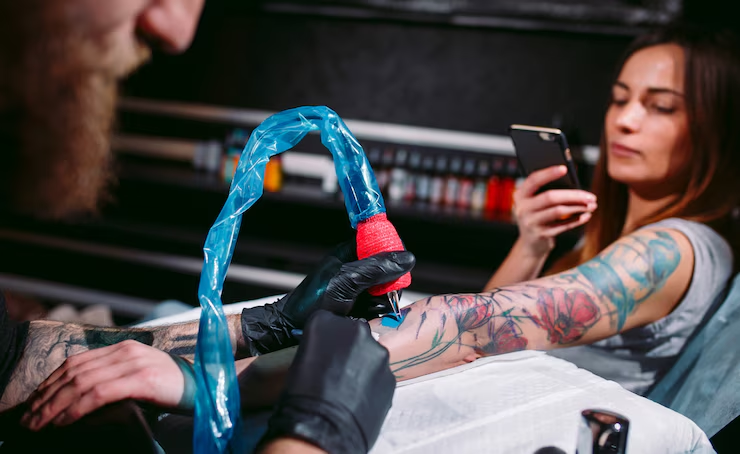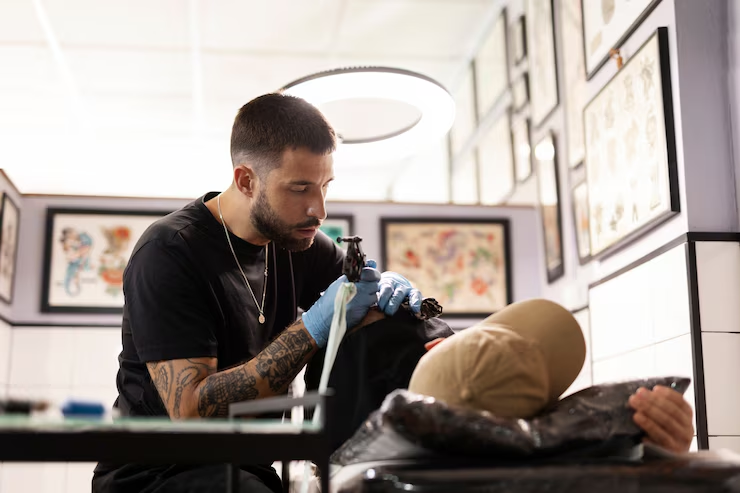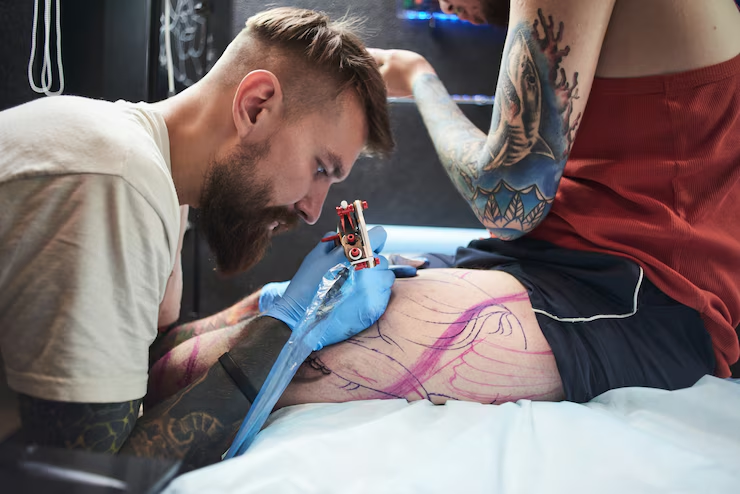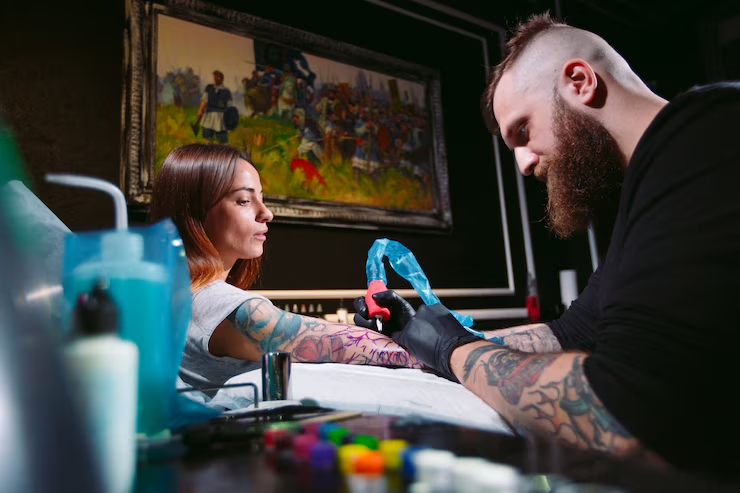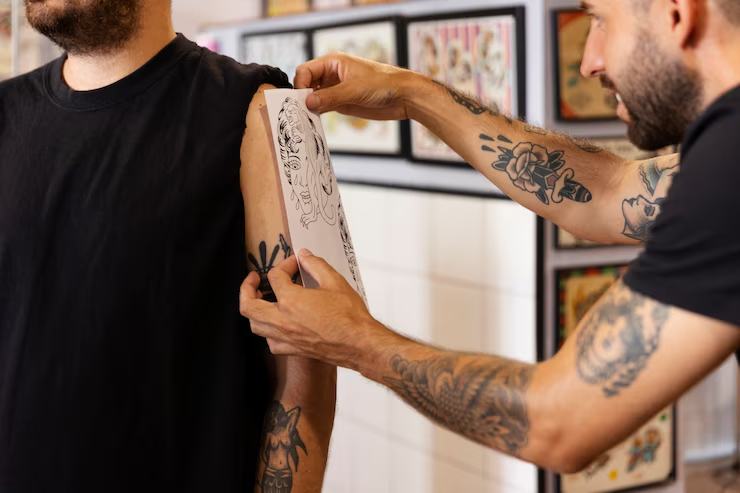The Art and Meaning of Tattoos: A Deep Dive into Body Ink Culture
Introduction :
Tattoos have become a universal form of self-expression, bridging the gap between tradition, rebellion, art, identity, and storytelling. From ancient tribal markings to modern body art, tattoos have evolved into a powerful symbol of individuality, cultural heritage, spiritual belief, and personal journeys. In today’s world, they are no longer confined to subcultures but are embraced by people from all walks of life — artists, professionals, celebrities, and everyday individuals.
In this comprehensive blog post, we will explore the history of tattoos, the cultural significance behind them, modern tattoo trends, styles and techniques, what to consider before getting inked, aftercare, and the psychology of why people get tattoos. This article is crafted to help you understand tattoos beyond just body decoration — as a form of meaningful art etched on human skin.
________________________________________
A Brief History of Tattoos
Tattoos have existed for thousands of years. The earliest known example is from 5,300 years ago — Ötzi the Iceman, a naturally preserved mummy found in the Alps, had over 60 tattoos on his body. In ancient Egypt, tattoos were worn by women as symbols of fertility and protection. In Polynesian cultures, tattoos (called “tatau”) were rites of passage and marks of status.
In Japan, tattooing dates back to 10,000 BC, used for spiritual and decorative purposes. However, in later periods, they became associated with criminals, which influenced how tattoos were perceived globally. In Western culture, tattoos gained popularity among sailors and soldiers, often representing experiences, loyalties, or lost comrades.
Today, tattoos have broken through societal taboos and have become a mainstream form of art and identity.
________________________________________
The Cultural Significance of Tattoos
Tattoos are deeply embedded in many cultures and often carry significant meaning:
1. Polynesian Tattoos
Polynesians have used tattoos as part of their spiritual and social identity. Patterns and symbols are often specific to a person's genealogy, achievements, and beliefs.
2. Japanese Irezumi
Traditional Japanese tattoos depict mythical creatures like dragons, koi fish, and tigers, representing strength, protection, and good fortune. Despite a criminal stigma in Japan, traditional Irezumi is respected worldwide as a fine art form.
3. Indian and Henna Tattoos
In Indian culture, temporary tattoos made from henna (mehndi) are used during festivals, weddings, and religious ceremonies. They symbolize joy, beauty, and celebration.
4. Maori Moko
The Maori people of New Zealand use facial tattoos (Ta Moko) as a sign of identity, heritage, and warrior status. Each design is unique and tells the story of the wearer’s ancestry.
5. Western Tattoos
In Western society, tattoos evolved from being taboo to trendy. People use them to express individuality, commemorate loved ones, or convey personal values.
________________________________________
Modern Tattoo Trends
Tattooing continues to evolve with trends influenced by art, pop culture, and personal storytelling. Some of the most popular trends today include:
1. Minimalist Tattoos
Simple linework, small symbols, and clean typography have become favorites among first-time tattoo clients and those who prefer subtle designs.
2. Realism
This style recreates real-life portraits, animals, or scenes with incredible detail and shading. It requires a highly skilled tattoo artist.
3. Watercolor Tattoos
Bright splashes of color mimic the effects of watercolor painting, creating vibrant and abstract tattoo art.
4. Geometric Tattoos
These incorporate patterns, symmetry, and sacred geometry. They’re aesthetically pleasing and often hold spiritual meanings.
5. Blackwork
This bold, dark style focuses on solid black ink, often with tribal or abstract patterns.
6. Fine Line Tattoos
Delicate and elegant, these tattoos use ultra-fine lines to create beautiful, detailed artwork.
7. Glow-in-the-Dark (UV) Tattoos
Using special ink, these tattoos are visible under UV light, making them popular in nightlife and rave culture.
________________________________________
Common Tattoo Themes and Their Meanings
Many people choose tattoos based on symbolic meanings. Here are a few popular ones:
• Feathers – Freedom, spirituality, connection with nature.
• Anchor – Stability, hope, a safe return.
• Compass – Guidance, direction, purpose.
• Lion – Courage, strength, leadership.
• Snake – Rebirth, transformation, healing.
• Butterfly – Beauty, change, and personal growth.
• Clock – Time, life’s journey, moments that matter.
• Quote Tattoos – Personal mantras or messages that reflect one’s beliefs.
________________________________________
Tattoo Placement: What It Says About You
Placement can influence the meaning or visibility of a tattoo. Here are common areas and their significance:
• Wrist – Visibility, self-expression, reminders.
• Forearm – Confidence, openness, strength.
• Back – Privacy, large canvases for storytelling.
• Chest – Close to the heart; symbolizes love and deep meaning.
• Fingers – Subtle, often initials or symbols.
• Thighs – Personal, hidden meaning.
• Neck/Face – Boldness, rebellion, strong identity.
________________________________________
Things to Consider Before Getting a Tattoo
Getting a tattoo is a personal and permanent decision. Here are key things to keep in mind:
✅ 1. Research Your Artist
Choose a licensed and experienced tattoo artist. Review their portfolio and client feedback.
✅ 2. Understand the Design Meaning
Make sure the symbol or word you choose has a meaning that resonates with you. Avoid designs from cultures you don’t understand or respect.
✅ 3. Think About Placement
Some jobs and societies still stigmatize visible tattoos. Consider long-term visibility and implications.
✅ 4. Pain Tolerance
Pain varies by area. For example, ribs, feet, and spine tend to be more painful than arms or thighs.
✅ 5. Tattoo Aftercare
Healing is crucial. Improper aftercare can lead to infections or faded ink.
________________________________________
Tattoo Aftercare Tips
• Keep the bandage on for 2-4 hours after the session.
• Gently wash with antibacterial soap and warm water.
• Apply a thin layer of unscented healing ointment.
• Avoid direct sunlight, swimming, and tight clothes on the area for 2-3 weeks.
• Don’t scratch or peel the scabs.
A well-cared-for tattoo can last a lifetime in vibrant condition.
________________________________________
Psychology Behind Tattoos
Why do people get tattoos? The motivations can be deeply personal or artistic. Here are some psychological reasons:
🧠 1. Self-Expression
Tattoos serve as a canvas for expressing one’s thoughts, beliefs, or personality.
🧠 2. Healing from Trauma
Many people get tattoos to commemorate overcoming pain, loss, or trauma — a form of emotional catharsis.
🧠 3. Memorials
Tattoos honoring loved ones who’ve passed can help people grieve and feel connected.
🧠 4. Confidence and Body Image
For some, tattoos enhance self-confidence and body appreciation.
🧠 5. Group Identity
Tattoos can mark belonging to a community — military units, religious groups, biker clubs, or fandoms.
________________________________________
Tattoo Removal: What You Should Know
Though tattoos are permanent, removal options exist for those who regret their choices:
• Laser Removal: Most common method; expensive and may require multiple sessions.
• Surgical Excision: Removes the tattooed skin; leaves a scar.
• Dermabrasion: Sanding the skin; painful and less common now.
Prevention is better than cure — so always think carefully before getting inked.
________________________________________
The Future of Tattoos
The tattoo industry continues to innovate. Upcoming trends and technologies include:
• 3D Tattoos – Creating hyper-realistic illusions on skin.
• Augmented Reality Tattoos – Tattoos that interact with smartphone apps.
• Biometric Tattoos – Tattoos with sensors that monitor health metrics like glucose or heart rate.
• Tattoo Ink Innovations – Vegan ink, allergy-free formulations, and ink that fades over time.
________________________________________
Conclusion
Tattoos have transcended time, culture, and stigma to become a universally accepted form of art and identity. Whether you view them as a personal story, a memorial, an act of rebellion, or a fashion statement, tattoos offer something deeply human — a way to permanently mark moments, beliefs, and emotions on our very bodies.
Before getting inked, it's important to research thoroughly, reflect on the meaning, choose a reputable artist, and take good care of your skin. A tattoo isn’t just skin deep — it’s a part of your life’s story.
Whether you’re planning your first tattoo or adding another to your collection, remember: ink with meaning lasts longer than ink without it.
________________________________________
